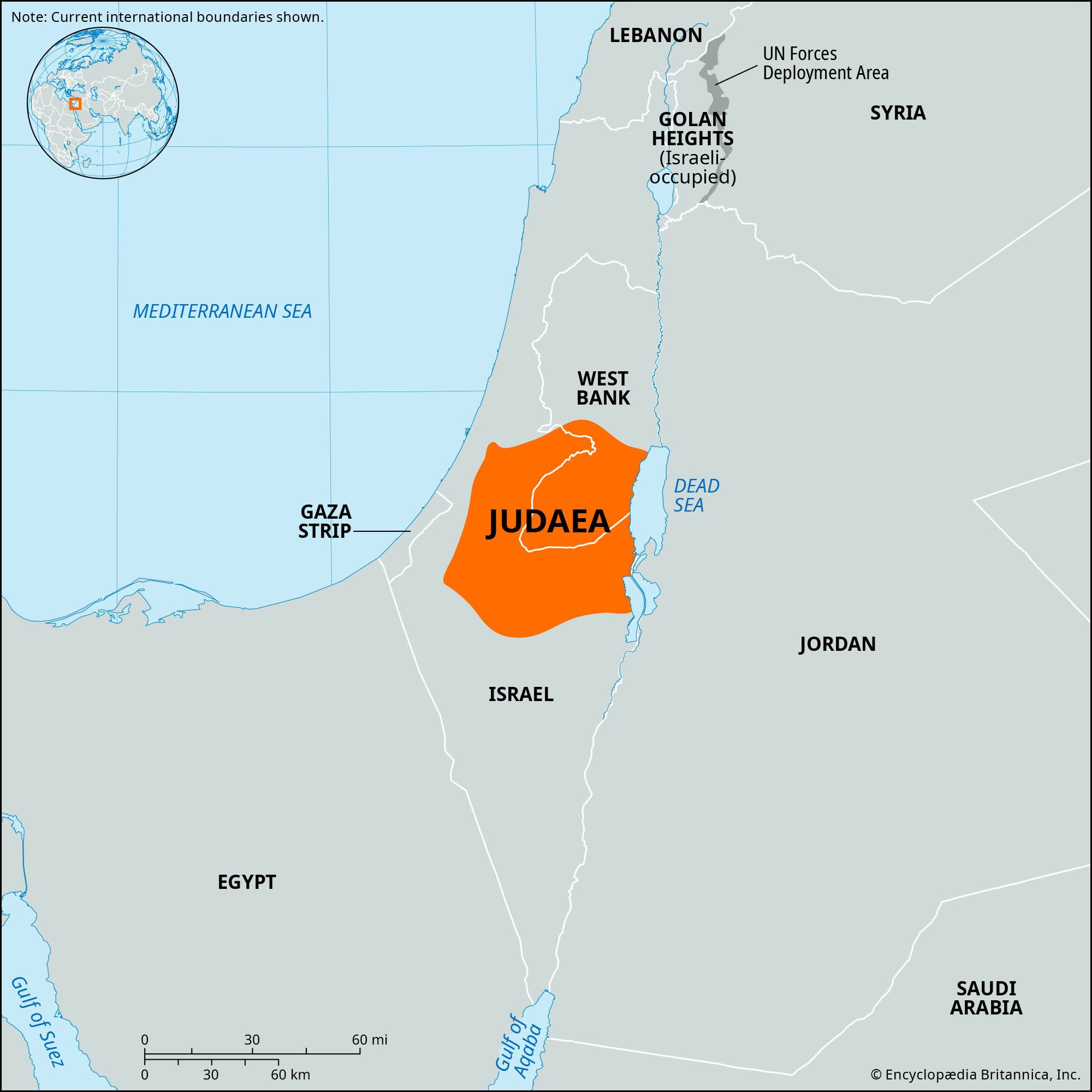Judaea, historically significant as the southernmost region of ancient Palestine, is a land steeped in rich history and geographical diversity. Positioned south of Galilee and Samaria, the other two traditional divisions of ancient Palestine, Judaea’s boundaries were not always sharply defined. However, Beersheba traditionally marked its southernmost extent. The landscape of Judaea is varied, yet its heartland lies in the elevated hill country, known as Har Yehuda, or the “Hills of Judaea.” This core region stretches southward from the vicinity of Bethel (modern-day Ramallah) to Beersheba, encompassing key historical cities such as Jerusalem, Bethlehem, and Hebron.
 Locator map showing the geographical location of Judea within ancient Palestine, highlighting its position south of Samaria and west of the Dead Sea.
Locator map showing the geographical location of Judea within ancient Palestine, highlighting its position south of Samaria and west of the Dead Sea.
Before the Israelite conquest of Palestine, the Canaanites held sway over this area, with Hebron rising as a prominent center. As the tribes of Israel entered and claimed territories, the tribe of Judah asserted control over a vast expanse, starting just south of Jerusalem and extending into the Negev region, south of Beersheba. The tribes of Simeon, Benjamin, and Dan also established smaller settlements within the region at different times. The 10th century BCE marked a turning point when David became king of Judah. He captured Jerusalem, then a Canaanite stronghold known as Jebus, and transformed it into the capital of the unified kingdom of Israel.
Following the reign of David’s son, King Solomon, the ten northern tribes seceded from Judah. Jerusalem then remained the capital of the Kingdom of Judah, a kingdom that endured until its conquest by the Babylonians in 587/586 BCE. The Babylonian conquest led to the destruction of Jerusalem. However, the story of Judaea did not end there. Persian kings later facilitated the return of Jewish captives from Babylonia to their homeland. These returnees were permitted to rebuild their temple and the city walls of Jerusalem, marking a period of restoration and resilience.
The conquests of Alexander the Great in the Middle East brought Judah under successive Hellenistic rules, first by the Ptolemies and then by the Seleucids. The Seleucid attempts to suppress the Jewish faith sparked resistance, leading to the rise of the Maccabees. This family of Jewish leaders spearheaded a revolt, gradually expelling the Seleucids and re-establishing an independent Kingdom of Judaea. Internal strife within the Maccabee family, however, paved the way for Roman intervention in 63 BCE.
Under Roman dominion, Herod the Great was appointed King of Judaea in 37 BCE, eventually extending his rule over all of Palestine by 20 BCE. After Herod’s death, the region was governed by a mix of Herod’s descendants and Roman procurators. A major Jewish revolt in 66 CE culminated in the devastating destruction of Jerusalem in 70 CE, a pivotal event in Jewish history. Despite these tumultuous changes, the name Judaea has persisted through time. Today, the term continues to denote a region in modern Israel that largely corresponds to its historical boundaries, a testament to its enduring geographical and historical identity.

